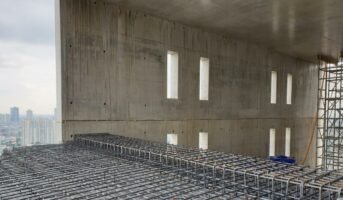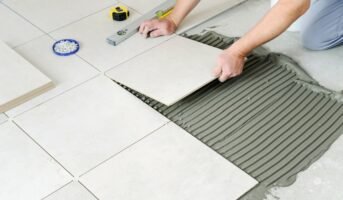The rat trap bond is a type of brick masonry wall consisting of bricks placed in a vertical position rather than the usual horizontal one. This creates small cavities in the wall while keeping the wall thickness the same as it would normally be in a conventional brick wall.
Also known as the Chinese brick bond, this type of masonry bond is predominantly used to reduce the number of bricks or mortar used without compromising on stability or rigidity.
Architect Laurie Baker introduced it in Kerala, and it was used extensively to lower the construction cost and material requirement and improve thermal efficiency without compromising on the strength of the wall.

Source: Pinterest
See also: GFRG panels in building construction: Your guide to rapid walls
Rat trap bond: Selection of bricks
Selecting the right type of brick is very crucial when it comes to building any structure, especially when it comes to rat trap masonry, as a lesser number of bricks are used. A number of factors are taken into consideration when it comes to selecting the right type of brick for rat trap masonry.
- The size of the bricks should be standard. Variation in size is unacceptable as it can weaken the structure beyond repair.
- In India, acceptable brick size is: Length- 200-250 mm, width- 100-115 mm and height- 65-75 mm.
- The edges and corners of the brick must be straight and sharp. It should be perfectly rectangular in shape.
- Rat trap masonry is modular, which begs for the brick to be of uniform size.
Rat trap bond: Construction
Construction is another crucial aspect of building a rat trap bond. Since its origin, only one method has been used to build rat trap masonry.
- Place the bricks in a vertical position so that the 110 mm face is seen from the front elevation.
- The width of the wall should presumably be kept at 230 mm by default. This creates a cavity inside the wall.
- The first and last layers of the masonry are constructed just like any normal wall.
- The sides of the walls, as well as the sills, are constructed with the use of solid masonry or without any cavities. This is done in order to fix any flaws.

Source: Pinterest
- Horizontal and vertical reinforcement bars are now added to the cavities to provide structural support and strength to the construction.
- With prior planning, electrical work and plumbing work can be done now.
Rat trap bond: Advantages

Source: Pinterest
- The spaces in between the bricks act as thermal insulators, helping the inside of the structure maintain cool temperatures in summer and warmth in winter.
- The rat trap bond uses fewer bricks and can reduce the cost by up to 30% compared to a conventional brick wall. A rat trap bond uses about 470 bricks, whilst a conventional brick wall uses around 550
- Walls made with rat trap masonry can be used as partition walls as well as load-bearing walls.
- Not much of a commercial advantage, but a naked rat trap structure sure looks pleasing to the eyes.
- The rat trap has 30% cavities, which means it has reduced deal load, which in turn reduces the amount of material needed to support the structure.
- Insertion of reinforcement bars can be done through the cavities until the foundation.
- Since its establishment, a plethora of buildings constructed using this method have proved that they can stand the test of time very well.
Rat trap bond: Disadvantages

Source: Pinterest
- Poor quality sound insulation.
- Requires average to highly skilled labour.
- Frequent cleaning of external surfaces is required if not plastered.
- Special care and attention should be given during the planning and construction of the rat trap masonry.
FAQs:
Is the rat trap bond load-bearing?
The rat trap bond can be used in load-bearing structures as well as non-load-bearing structures.
Why is the rat trap bond substantially cheaper?
The rat trap bond uses bricks in a vertical orientation rather than a horizontal orientation. This enables the use of 30%-50% lesser bricks while keeping the same level of structural rigidity and stability.
Housing News Desk is the news desk of leading online real estate portal, Housing.com. Housing News Desk focuses on a variety of topics such as real estate laws, taxes, current news, property trends, home loans, rentals, décor, green homes, home improvement, etc. The main objective of the news desk, is to cover the real estate sector from the perspective of providing information that is useful to the end-user.
Facebook: https://www.facebook.com/housing.com/
Twitter: https://twitter.com/Housing
Email: [email protected]











